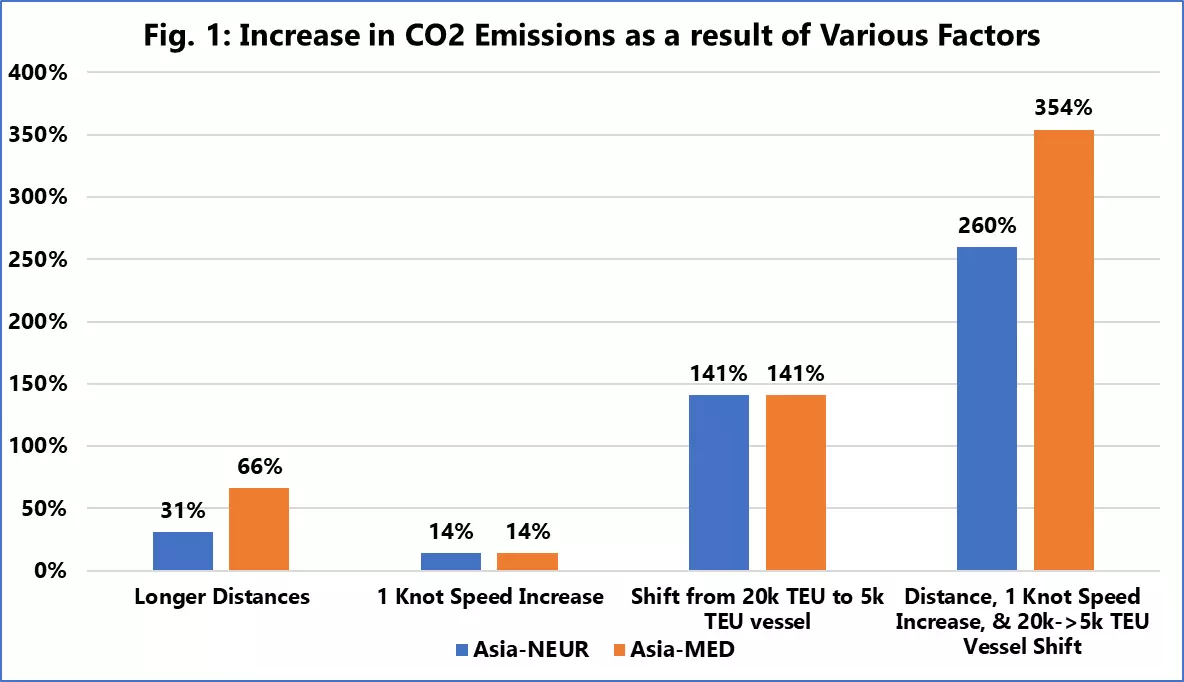- Sea-Intelligence has predicted that maritime companies’ CO2 emissions would rise as a result of the ongoing Red Sea crisis.
- There are three factors to consider: longer sailing lengths result in increased emissions, as do higher sailing speeds and a shift from big vessels to smaller, less fuel-efficient vessels.
- Sea-Intelligence used a proxy container service to estimate the size of these increases in CO2 emissions.
With the escalating Red Sea conflict, it is increasingly clear that we might be in it for the long haul, forcing shipping lines into round-of-Africa routings for the foreseeable future, reports ITLN.
“A direct consequence of this is an increase in CO2 emissions,” says Alan Murphy, CEO, Sea-Intelligence. “There are three elements to consider: Increase in emissions due to longer sailing distances, potential increases due to faster sailing speeds (to maintain weekly departures), and if there is a shift from large vessels to smaller, less fuel-efficient vessels. Using a proxy container service, we can estimate the scale of these increases in CO2 emissions.”
Increase in CO2 emissions
If the shipping lines use the exact same vessels, at the exact same speed, then emissions increase on a 1:1 ratio with increased sailing distances, says the latest update from Sea-Intelligence. As sailing distances around Africa are on average 31 percent and 66 percent longer for Asia to North Europe and Mediterranean, respectively, CO2 emissions will increase by these factors, at minimum.

“If the vessels also sail faster, emissions will increase even further as fuel consumption is not a linear function of sailing speed. As an example, based on our fuel consumption model, a one knot increase in speed, from 16 to 17 knots, will increase emissions by 14 percent.”
“Finally, as shipping lines scramble to phase in additional capacity to cater for the longer sailing distance, we see smaller, less fuel-efficient vessels being deployed on Asia-Europe. On a TEU-basis, some of these smaller vessels see an increase in CO2 emissions of 141 percent compared to conventional ULCVs. Putting all three components together could lead to CO2 emissions increases of 260 percent and 354 percent, to North Europe and Mediterranean, respectively.”
Sea-Intelligence adds that there is no realistic way to mitigate the increased emissions, “at the very least those that are due to an increase in sailing distances.”
Did you subscribe to our daily Newsletter?
It’s Free! Click here to Subscribe!
Source: ITLN

















